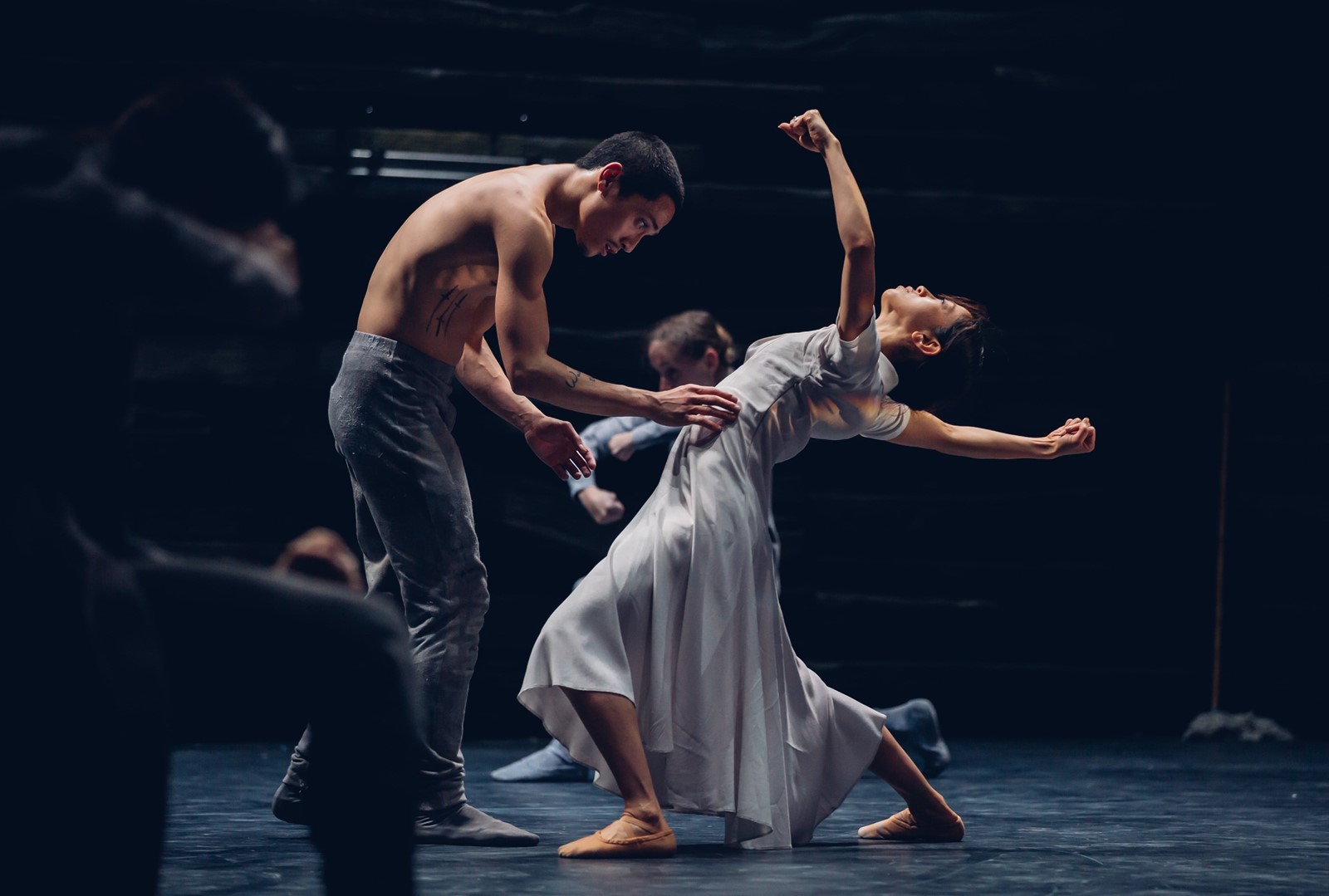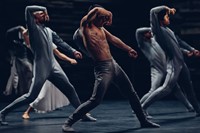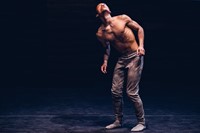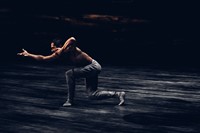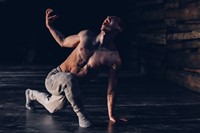In Creature, Academy Award-winning director Asif Kapadia tackles an original ballet that is equal parts Frankenstein and Georg Büchner’s seminal stage play Woyzeck. Set in an isolated Arctic research station, the creature, expertly crafted by Boston Ballet lead dancer Jeffrey Cirio, suffers endlessly at the hands of a fascistic military brigade. He is tested and experimented on and exposed to harsh conditions including isolation for research purposes by over-zealous doctors, who watch as his physical wellbeing and mental state dance on the edge of destruction. It is only when cleaner Marie shows the titular creature kindness and compassion, that he can dare to dream of escape, no matter the consequence.
Created for the English National Ballet by Oliver Award-winning choreographer Akram Khan, Creature was originally due to run at London’s Sadler’s Wells in 2021, but the global pandemic shut down production and it seemed as though the dance piece would not be seen by an audience.
Slickly shot during this downtime by Kapadia, the heralded filmmaker behind critically lauded documentaries Amy and Senna, Creature captures the spirit of Khan’s contemporary ballet, presenting a visceral fusion of film and theatre. Expertly exploring the abuse of power, the rise of the dictator and dictatorship, and the roles of corruption and chaos in society, this gothic interpretation of Creature is – undeniably – a horror ballet for our times.
Hynam Kendall: Is it true that this was the first ballet you’d ever seen?
Asif Kapadia: It’s embarrassing, I know, but yes. I knew Akram [Khan], but I’d never been to any of his shows. I’d never even been to Sadler’s Wells – I have no excuse. I’ve really gotten into the habit of making films about things I know nothing about, and I’m more and more thinking that every movie I make is like doing a degree in a subject that I like. It’s never too late to learn.
HK: Were you invited to a rehearsal of Creature with the view to turning it into a film?
AK: Yes, Akram had been commissioned by the English National Ballet to make Creature, which would be performed at Sadlers Wells, but due to Covid they couldn’t perform it. So, a producer contacted me, explaining that there was a strong possibility that the only way Creature would ever be seen was through film. That’s why I attended. And I knew nothing; I went into the rehearsal blind, to see what I would feel. I committed only to sitting on the floor and watching.
HK: But it spoke to you, and you knew this was a film that you could make?
AK: It was mid-lockdown, so I hadn’t seen other human beings – let alone human beings touching one another. That alone had a profound effect on me that day. I struggle with the theatre, with live events, stuck in the cheap seats way up in the stalls where I can’t see anything. But when I sat there on the floor, and I looked up at those dancers, and watched every single hand gesture, I thought: people need to see this. I filmed the principal dancer, Jeffrey Cirio, on my phone and saw there and then that it was a movie. Watching it back was like seeing a silent film: pure cinema. Sometimes out of a series of shit going wrong, great art happens. I knew I could be the one to tell it, because the story was scary, unsettling, uncomfortable. In your face. This isn’t pretty tutus in pink, this is dark. And I am attracted to that.
HK: Dance is designed to be seen from the front. Your camera swoops, shows dancers in close-up and, at one point, quite literally circles your two protagonists.
AK: From first viewing, my thing was: I want to be on stage. I want to be in there, looking through holes, looking from above, to be under the dancers, experiencing impossible angles for theatre. The danger was, it’s always easier to come back to the big, wide shot. And easy is boring. That is what the theatre would do for a record. Remember, I came to ballet cold. I had no baggage. So, my whole thing was ‘we’re going to fuck this up and create something new’. Everyone kind of panicked when I would say, ‘What if we were actually in between the dancers,’ and they would have to rethink the dance, because it’s set staging, it’s so technical, in time, because ballet is about being perfect. But I was sure I needed to stick a big lump of metal in the way with a camera bloke, complicating everything.
“Senna took me five years, Amy took three-and-a-half years, Diego Maradona took three years. I had ten days” – Asif Kapadia
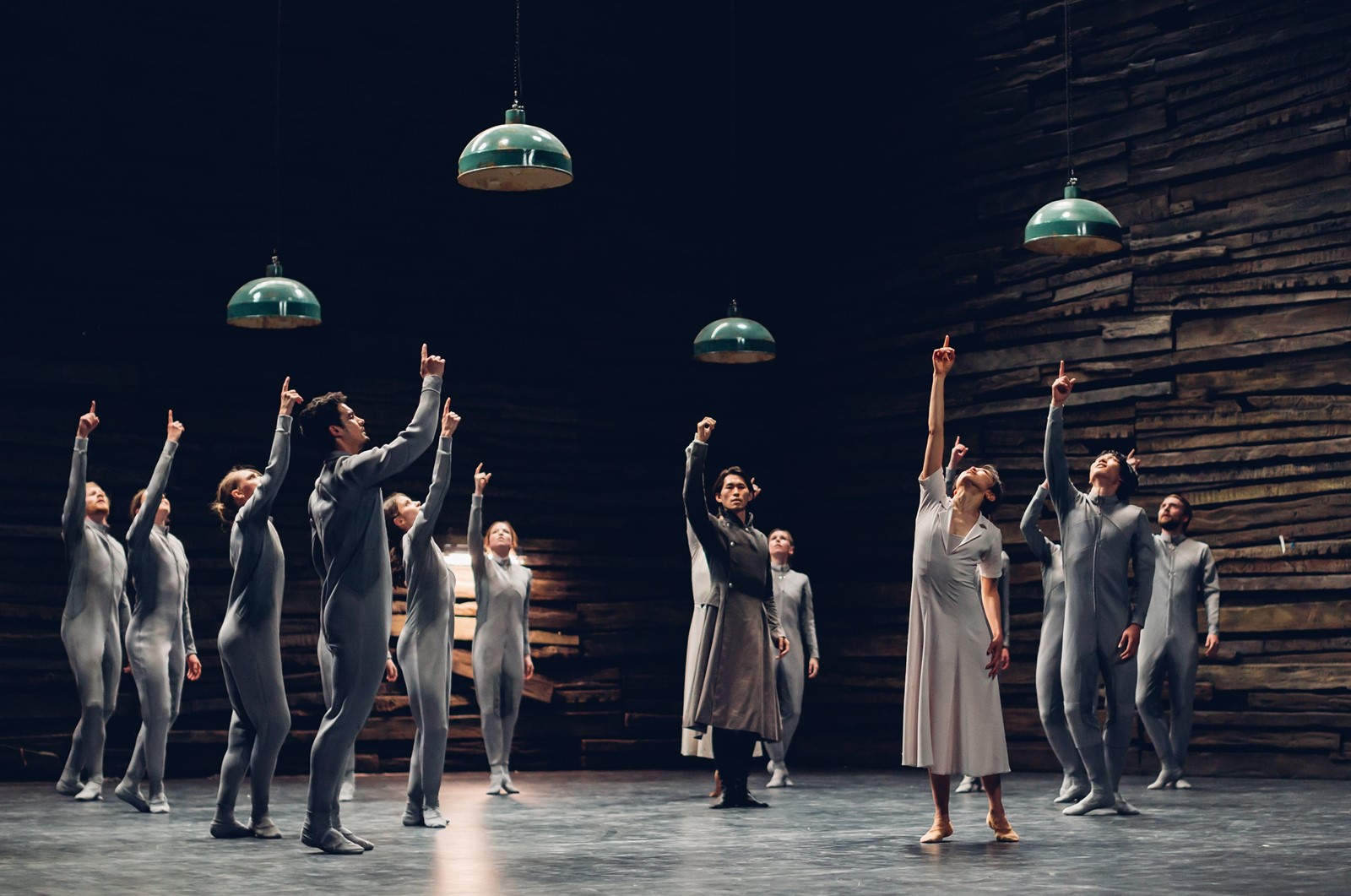
HK: Why keep it on a stage?
AK: Initially there was talk of, ‘Do you want to take it outside? Do you want to do it on location?’ But I only had ten days with the dancers before they moved on to another show. Just to let you know, Senna took me five years, Amy took three-and-a-half years, Diego Maradona took three years. I had ten days. And the English National Ballet has quite strict union rules about how many hours a dancer can perform – they come in, they warm up, they train, they do their massage, they dance, they break, they warm down. And there were certain considerations that they absolutely needed; for example, to be able to dance and move seamlessly on the floor, which I knew they could do on a stage. And moving location – what we call a ‘company shift’ – is wasted time. Time we didn’t have. So, I just thought: keep it simple, stupid.
HK: By shooting in a single setting there is an intense feeling of claustrophobia for the viewer.
AK: Yes, I agree. I’m a big fan of the [Roman] Polanski films that all take place in confined spaces, because of this. And two of my references were Pina, Wim Wenders’ documentary on Pina Bausch, and Lars von Trier’s Dogville, which was a single set and similarly claustrophobic to watch. But I enjoyed the challenge of changing the room with light, with mood. I pushed the location as far as it would go. In theatre, this restriction happens all the time, and you get creative with your solutions. But I like that there are moments when I take you out of it; like the exterior shots of the Arctic that I nicked from my movie Far North, which I shot in 2007 with Michelle Yeoh. Creature was a very low-budget film, so I was begging, borrowing and stealing from myself.
“When I made this film, there was a lot in the ether about being under surveillance, our information being shared, NHS data being bought. And these characters are under surveillance, from the characters who are clearly part of some fascistic regime ... And from us” – Asif Kapadia
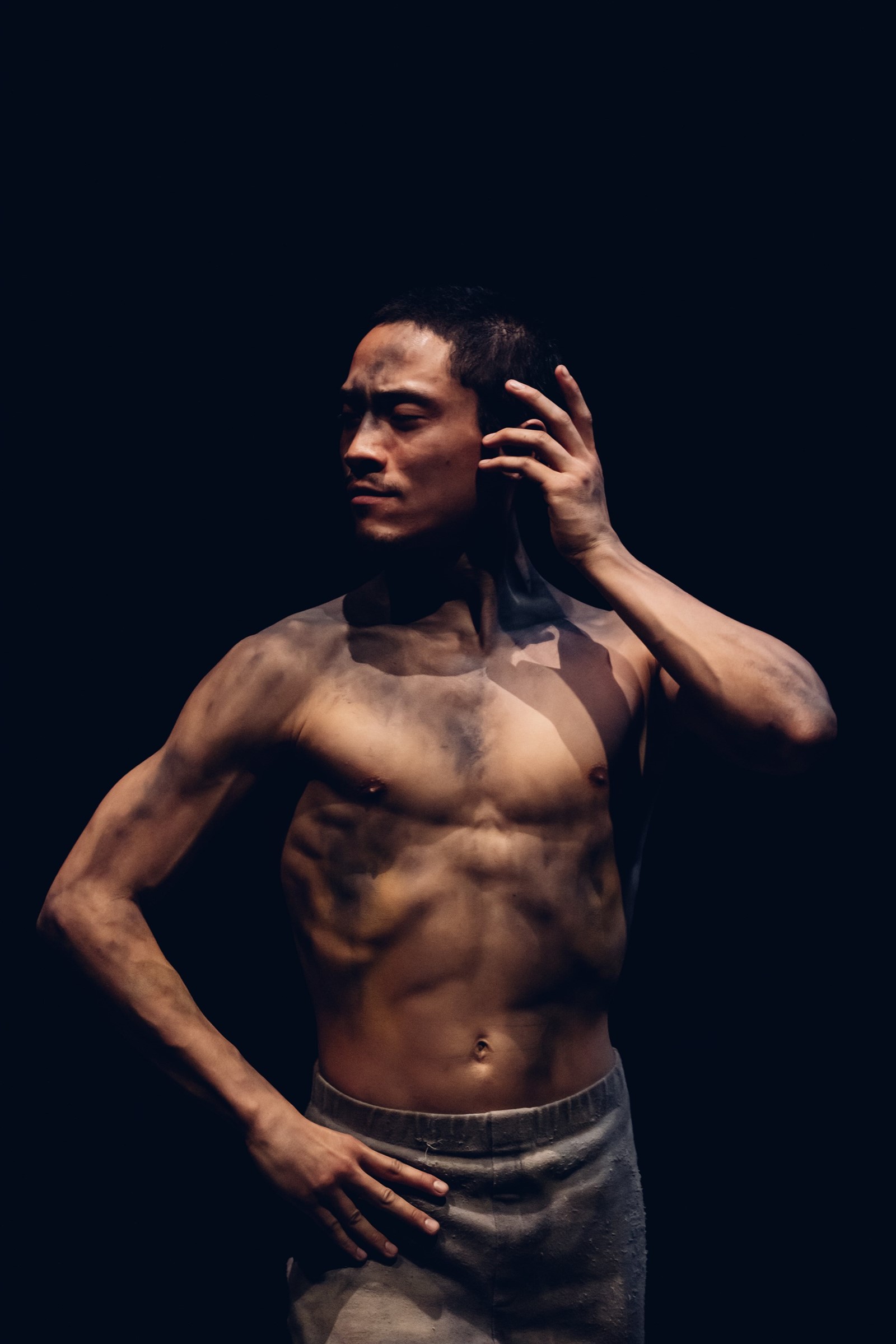
HK: The creature felt like an open wound, living in fear, trying to survive with the realisation that nature, external factors, people in power can very easily bring us to our knees. It took me back to how it felt during the pandemic.
AK: That’s incredible that you got that. Because there is a fear sewn into the film. I would be on the tube to the set on a morning and there’d be no one on the train; I’d be alone. I was traveling through central London with no people on the streets. It’s in there, in the texture of every frame, but we don’t speak about it on the surface. Similarly, when I made this film, there was a lot in the ether about being under surveillance, our information being shared, NHS data being bought. And these characters are under surveillance, from the characters who are clearly part of some fascistic regime, who swarm the stage from the sides. And from us.
HK: The film feels so prescient, as though addressing the state of the world today: the abuse of power, the rise of the dictator and dictatorship, corruption, chaos, otherness.
AK: I agree. The creature and Marie want to be part of something, a society, but they’ll never be a part of it. They’ll be used, abused, screwed up and left by the people with power. Someone who works in the film industry said to me that it made them think of Harvey Weinstein, whose power was built on abuse. When the dancers stop, and point up above their heads to the sky, they said it was like Weinstein saying, ‘I’m gonna make you a star.’ When I would say to Akram at the beginning, what is this choice or that about, he’d say, ‘It’s a metaphor, it’s up to you.’ Environment, global warming, religion, colonialism, xenophobia, Brexit, Trump. Outsiders searching for belonging. The enduring hope of human connection. It’s all those things, everything. Because you see it.
Creature is on at the BFI in London from February 24. The original stage production is on at Sadler’s Wells from March 23–April 1.
